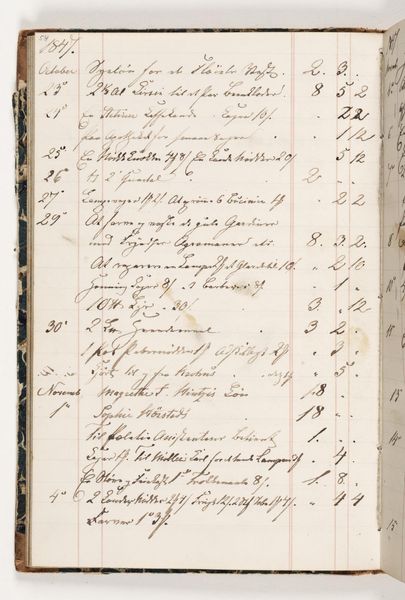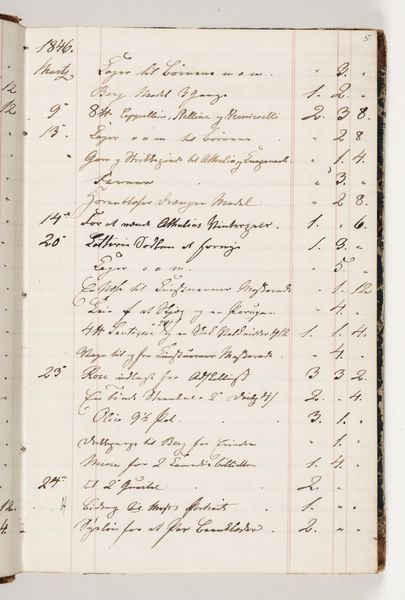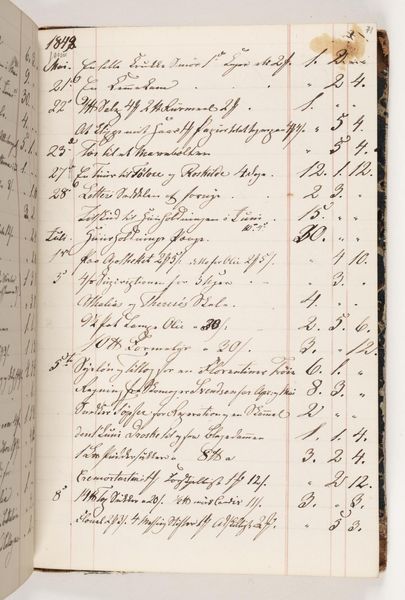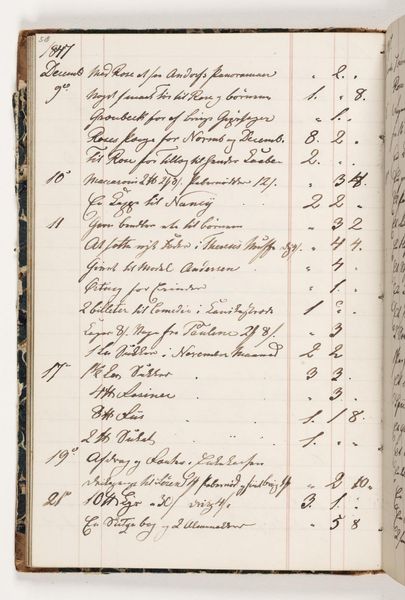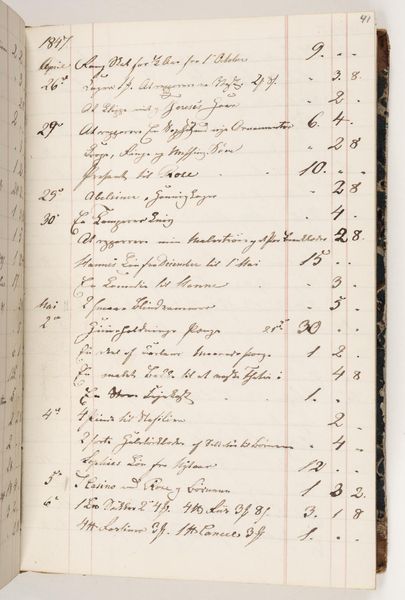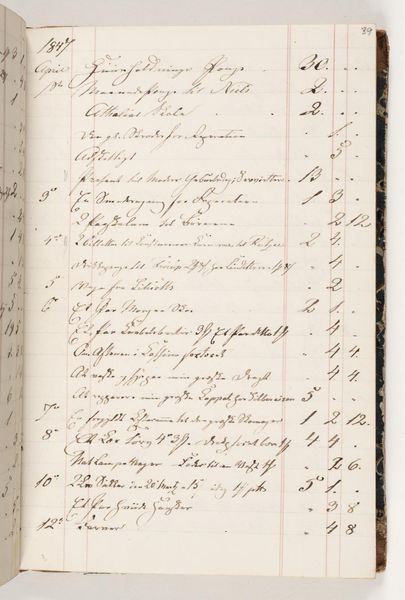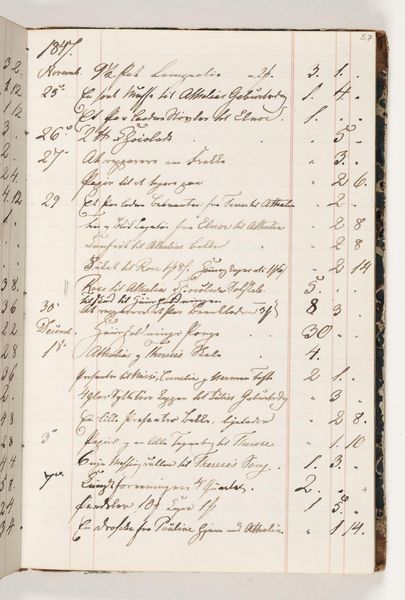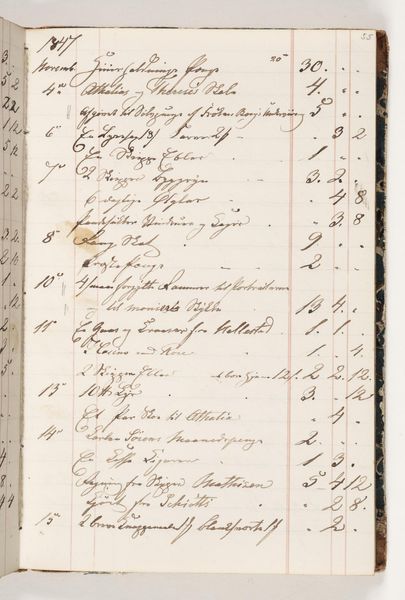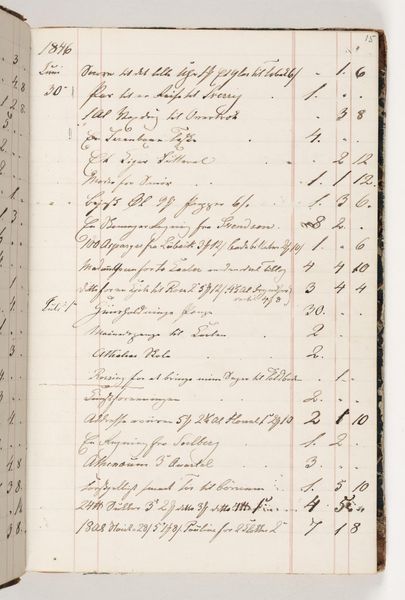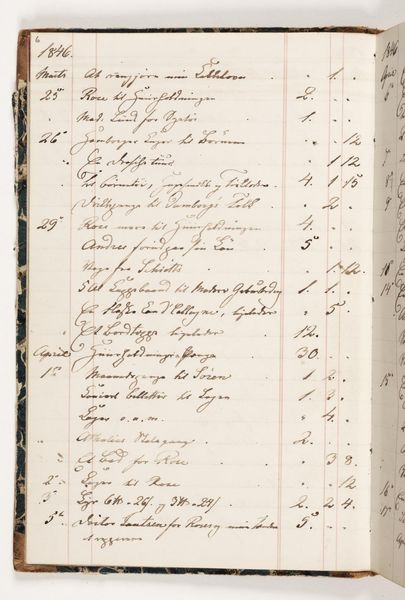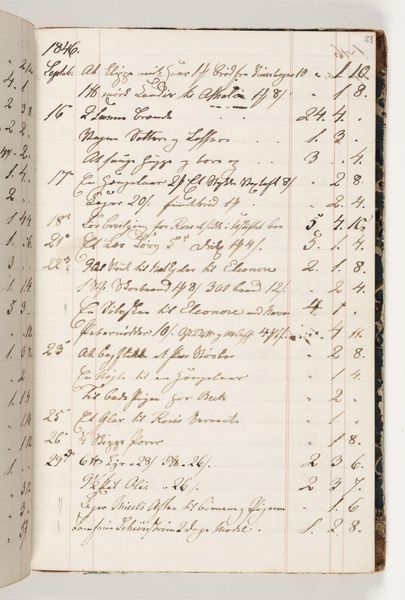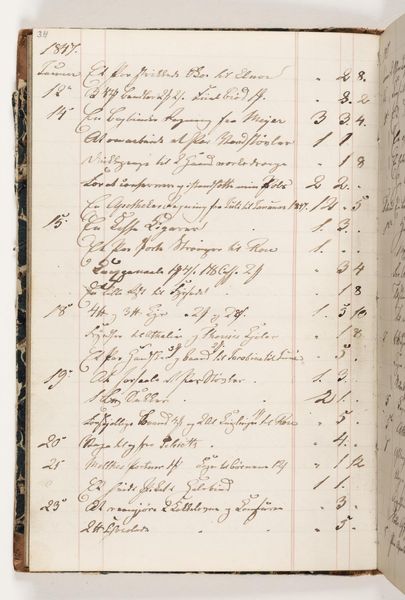
drawing, paper, ink
#
drawing
#
paper
#
ink
#
calligraphy
Dimensions: 200 mm (height) x 130 mm (width) (bladmaal)
Curator: "Regnskab 1847," a drawing in ink on paper by Martinus Rørbye, appears to be a page from a ledger. What strikes you first about it? Editor: The beautiful, precise calligraphy gives it such a formal feel, almost like a work of art in itself, despite seemingly mundane accounting. What do you see in this piece? Curator: I see a window into the social fabric of 1847. These aren't just numbers; they represent transactions, labour, and likely, the livelihoods of individuals tied to this account. How might economic systems depicted here have perpetuated social hierarchies and inequalities? Editor: That's a great point! The fact that it's in a ledger, dealing with money, brings a whole new level of consideration to this piece. I am assuming that back then, most people didn't have ledgers. Curator: Exactly. Consider the power dynamic inherent in record-keeping. Who controlled the means of documentation, and therefore, who controlled the narrative of exchange? Are women or other underrepresented groups accounted for within this record, and if so, how? Editor: It does make you think about who is writing this and whose activities are represented—or misrepresented. This one page sparks thoughts about broader economic and societal inequities that art rarely prompts in such a direct way. Curator: Precisely. It serves as a potent reminder that art historical inquiry must engage with questions of power, representation, and social justice, extending beyond aesthetics and into the realm of lived experiences and structural inequalities. Editor: It definitely gives a deeper, historical understanding of how cultural exchange can show these power imbalances in that moment in time.
Comments
No comments
Be the first to comment and join the conversation on the ultimate creative platform.
